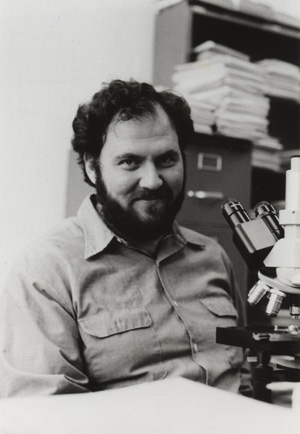|
University of California, Berkeley
| Department of Molecular & Cell
Biology Winer Laboratory
|
|||
Home
|
Publications
|
||
|
Neuroanatomy stands in a similar relation to
the neurosciences as mathematics does to physics. Neuroanatomy can specify
the substrates that underlie normal and pathological function as well as
neural plasticity. Without a neuroanatomical framework, physiological hypotheses
are less robust than they might be. We wish to understand
brain function using the auditory system as a model. We are now deriving the
structural principles that underlie tonotopic and binaural processing in the
auditory midbrain, thalamus, and cerebral cortex. Connectional tracers
(cholera toxin beta-fragment, biotinylated dextran amines, and fluorescent
compounds), and transmitter-specific labeling methods (immunocytochemistry
and anterograde transport) label functional brain circuits. Collaborative
physiological and anatomical experiments with Dr. Christoph Schreiner at UCSF
then address functional questions about cortical modular and laminar
organization. This enables us to pursue functionally driven hypotheses about
the organization of the auditory system. The ensuing findings have
significance for understanding larger principles of brain function such as
topography, evolution, and plasticity.
Jeff was born in
Minneapolis, MN on November 16, 1945.
He lived in Minnesota as a young man and moved to Phoenix Arizona for
middle and high school. He got
his bachelorŐs degree in psychology at the University of Arizona in 1967 and
received his Ph.D. at the University of Tennessee in Knoxville, Tennessee in
physiological psychology in 1974.
After post-doctoral studies with Irving Diamond at Duke university
(1974-1977) and later with Kent Morest at the University of Connecticut, in
Farmington, he came to Berkeley in 1979, joining the Department of Anatomy
and Physiology and set up his lab on the 4th floor of the old Life Science Building. His mission at the time was to
decipher the connections and functions of the auditory thalamus. In 1989, in the reorganization of the
biosciences on campus, he chose to join Molecular and Cell Biology rather
than Integrative Biology – a decision based mostly on the fact that
choosing the latter would have meant moving the lab twice rather than only
once. So the lab moved into LSA
just a few weeks before the Loma Prieta Earthquake. A few petri dishes rattled and slide boxes tipped over but
the earthquake lips on the shelves held and not a slide was broken! A scholar classically
trained in the 19 century Golgi method, a technique for staining individual
isolated neurons, Jeff is perhaps the last of his generation to have that
intimate knowledge of neurocytology that comes with countless hours at the
drawing tube of his microscope.
This perspective continued to inform his vision of how the brain is
organized. The great Spanish neuroanatomist, Santiago Ramon y Cajal was the
pioneer in this approach at the turn of the last century. The work evolved
technically to tract tracing studies of the central auditory pathways from
the auditory medulla to the midbrain, thalamus and finally a series of papers
on the auditory cortex and the many specialized subdivisions he helped
identify. The work was honored with
a Claude Pepper award in 1993 when we received a 7 year grant, giving him a
couple of extra years before having to go back to the NIH for more funds. Locally, he will be
remembered most for his generosity as a mentor to students – those in
his class – those in his lab – and the many advisees he saw on a
weekly basis. He was more
accessible than most faculty – He loved the
pedagogic role and his openness to students made him quite popular. He wrote more letters of
recommendation in a month than many others would be asked to write in a year
– not just for students but for colleagues applying for jobs and
faculty advancement. He is survived by his mother Eileen Winer, 94 and his sister
Jane Winer and her partner (and adopted sister, Carol Galbraith) of Maryland.
In lieu of flowers, donations may be sent to the Jeffery Winer Memorial Scholarship:
University of California,
Berkeley
Department of Molecular
and Cell Biology Jeffery Winer Memorial Scholarship Fund 142 Life Sciences
Addition #3200 Berkeley, CA 94720-3200 Lab Location: 289 LSA Tel: 510.642.9637 Fax: 510.642.6791
For more information: UC Berkeley Press Release: Neuroanatomist Jeffery Winer has died at 63 The Jeff Winer Neuroanatomy Blog
|
|||

